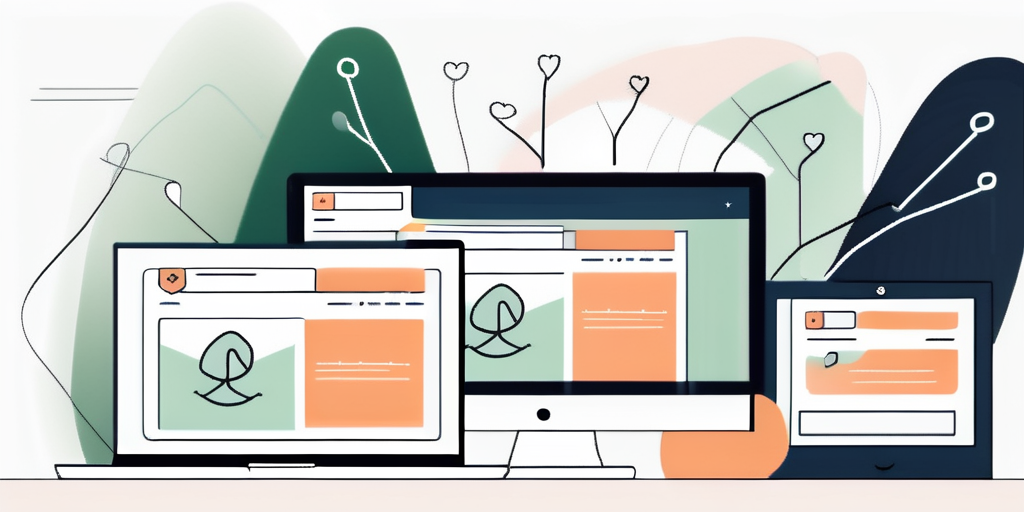The Ultimate Guide to Effective Email Marketing for Nonprofits

Email marketing has become an essential tool for nonprofits to connect with their audience, drive engagement, and raise awareness. In this ultimate guide, we will explore the importance of email marketing for nonprofits and provide actionable strategies to help you build a successful email campaign. Whether you are a small grassroots organization or a large established nonprofit, this guide will equip you with the knowledge and tools to make your email marketing efforts more effective.
Understanding the Importance of Email Marketing for Nonprofits
The Role of Email Marketing in Nonprofit Success
Email marketing plays a crucial role in the success of nonprofit organizations. It allows you to reach a large number of people at once, delivering your message directly to their inbox. With the right approach, email marketing can help you create stronger relationships with your audience, increase donations, and drive action towards your cause.
Benefits of Email Marketing for Nonprofit Organizations
There are several benefits of incorporating email marketing into your nonprofit strategy. First and foremost, it is a cost-effective way to communicate with your supporters. By leveraging email, you can keep your audience informed about your latest projects, events, and success stories without breaking the bank.
In addition to being cost-effective, email marketing allows you to personalize your message and tailor it to specific segments of your audience. This personalization helps create a sense of connection and relevance, increasing the likelihood of engagement and action.
Furthermore, email marketing provides valuable data and insights that can inform your future campaigns. By tracking metrics such as open rates, click-through rates, and conversions, you can measure the effectiveness of your emails and make data-driven decisions to optimize your strategy.
One of the key advantages of email marketing for nonprofits is its ability to reach a wide and diverse audience. With just a few clicks, you can send your message to thousands of individuals who have shown an interest in your cause. This broad reach allows you to spread awareness and generate support on a large scale.
Moreover, email marketing enables nonprofits to nurture relationships with their supporters over time. By consistently delivering valuable content and updates, you can build trust and loyalty among your audience. This trust can lead to increased engagement, volunteer participation, and ultimately, more donations to fuel your organization’s mission.
Another significant benefit of email marketing is its versatility. You can use emails to promote various types of campaigns, such as fundraising drives, volunteer recruitment, or advocacy efforts. By adapting your messaging and calls-to-action, you can effectively mobilize your audience towards specific goals and initiatives.
Lastly, email marketing allows nonprofits to stay top-of-mind with their supporters. By regularly appearing in their inbox, you can maintain a consistent presence and remind them of the impact they can make by supporting your cause. This consistent communication helps to strengthen the emotional connection between your organization and its supporters.
Building a Strong Email List for Your Nonprofit
Identifying Your Target Audience
In order to build a strong email list, it is essential to identify your target audience. Understanding who your supporters are, what motivates them, and what causes they care about will help you tailor your communication to resonate with them. Conducting surveys, analyzing website data, and engaging with your audience on social media can provide valuable insights into your target audience.
But let’s dive deeper into the process of identifying your target audience. Surveys can be a powerful tool to gather information directly from your supporters. By asking specific questions about their interests, preferences, and motivations, you can gain a deeper understanding of what drives them to support your nonprofit. Additionally, analyzing website data can provide valuable insights into the demographics and behaviors of your website visitors. This data can help you identify trends and patterns that can inform your email marketing strategy.
Strategies for Growing Your Email List
Now that you have identified your target audience, it’s time to focus on growing your email list. One effective strategy is to offer valuable content in exchange for email addresses. You can create downloadable resources, such as e-books or whitepapers, that are relevant to your nonprofit’s mission. These resources not only provide value to your supporters but also position your organization as a trusted source of information in your field.
But why stop there? Consider taking it a step further by creating an exclusive members-only section on your website. This section can offer additional resources, such as in-depth guides, video tutorials, or access to webinars. By providing exclusive content to your email subscribers, you not only incentivize people to join your email list but also foster a sense of community and belonging among your supporters.
Another way to grow your email list is by promoting your newsletter or email updates on your website, social media platforms, and at events. Don’t be afraid to get creative with your promotion strategies. For example, you can create eye-catching pop-ups on your website that offer a sneak peek into the valuable content your subscribers will receive. Or, you can host a giveaway where participants need to sign up for your email list to enter. These tactics can help you capture the attention of potential subscribers and encourage them to join your email list.
Additionally, collaborating with other nonprofits or influencers in your field can help you reach a wider audience and attract new subscribers. By joining forces with like-minded organizations or individuals, you can tap into their existing networks and leverage their credibility to expand your reach. Consider guest blogging on their platforms, participating in webinars together, or hosting joint events that bring together your collective supporters. These collaborations not only expose your nonprofit to new audiences but also demonstrate your commitment to collaboration and community-building.
Remember to always provide a clear and easy opt-in process to ensure a seamless experience for your potential subscribers. Make sure your sign-up forms are prominently displayed on your website and social media platforms, and clearly communicate the benefits of joining your email list. By removing any barriers to entry and clearly articulating the value your subscribers will receive, you can maximize your chances of growing a strong and engaged email list for your nonprofit.
Crafting Compelling Email Content
The Art of Writing Engaging Subject Lines
When it comes to email marketing, the subject line is the first impression your audience has of your email. Crafting compelling subject lines is crucial to ensure that your emails get opened and read. Keep your subject lines concise, clear, and intriguing. Personalization, urgency, and curiosity are effective techniques to entice your audience to open your emails.
Tips for Creating Valuable Email Content
The content of your emails should provide value to your audience. Consider their needs, interests, and pain points when planning your email campaigns. Share success stories, provide educational resources, or offer exclusive discounts or opportunities to your subscribers. Remember to keep your emails visually engaging, easy to read, and mobile-friendly.
Furthermore, segmentation is a powerful strategy to deliver personalized and relevant content to different segments of your audience. By grouping subscribers based on their interests or engagement levels, you can tailor your emails and increase the chances of engagement and action.
Personalizing Your Nonprofit Email Campaigns
The Power of Personalization in Email Marketing
Personalization is the key to connecting with your audience on a deeper level. By addressing your subscribers by name, sending customized recommendations, or referencing their past interactions with your organization, you can make your emails feel more personal and meaningful. The more personalized your emails are, the more likely your subscribers will feel valued and connected to your cause.
Techniques for Personalizing Your Emails
There are several techniques you can use to personalize your nonprofit email campaigns. First, leverage the data you have about your subscribers to segment your email list. This allows you to send targeted emails based on demographics, interests, or past interactions. Additionally, dynamic content allows you to customize the content within your emails based on each subscriber’s preferences or behaviors.
Automation is another powerful tool for personalization. Set up automated email sequences triggered by specific actions, such as signing up for your newsletter or making a donation. These automated campaigns can deliver the right message at the right time, nurturing your relationship with your subscribers and driving engagement.
Analyzing and Optimizing Your Email Marketing Efforts
Key Metrics to Track in Your Email Campaigns
Tracking key metrics is essential to measure the success of your email campaigns and identify areas for improvement. Some key metrics to monitor include open rates, click-through rates, conversion rates, and unsubscribe rates. By regularly analyzing these metrics, you can gain valuable insights into the effectiveness of your emails and make informed decisions to optimize your strategy.
How to Continually Improve Your Email Marketing Strategy
Improving your email marketing strategy is an ongoing process. One way to continually optimize your strategy is through A/B testing. Test different subject lines, email layouts, call-to-action buttons, or sending times to determine what resonates best with your audience. By making incremental improvements based on data, you can refine your email marketing strategy and achieve better results over time.
It is also important to regularly review and update your email list. Stay compliant with data privacy regulations and ensure that your subscribers are still interested in receiving your emails. Regularly cleaning your list and removing inactive or unengaged subscribers will improve your email deliverability and engagement rates.
Conclusion
In conclusion, email marketing is a powerful tool for nonprofit organizations to engage with their audience, drive action, and raise awareness. By understanding the importance of email marketing, building a strong email list, crafting compelling email content, personalizing your email campaigns, and analyzing and optimizing your efforts, you can take your nonprofit’s email marketing to the next level. Remember to always keep your audience at the forefront of your strategy and deliver value with every email. Happy emailing!
Ready to elevate your nonprofit’s digital presence and maximize the impact of your email marketing efforts? Contact us at BlueWing, where our expertise in paid media management and our commitment to sustainable growth for organizations like yours can help you harness the power of paid social media, search, and the Google Ad Grants program. Let’s work together to outperform industry benchmarks and amplify your impact.





